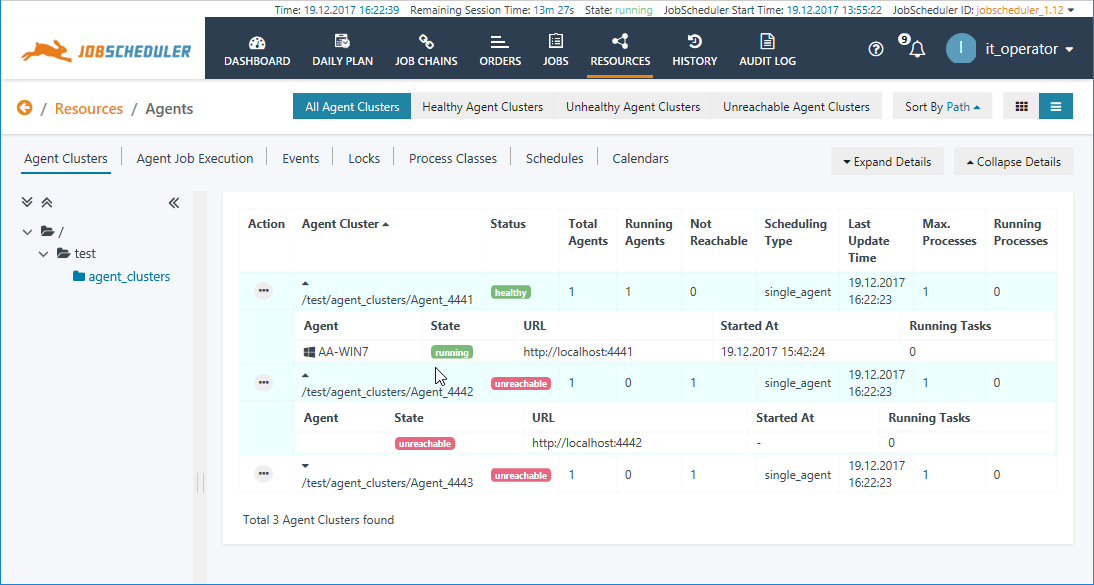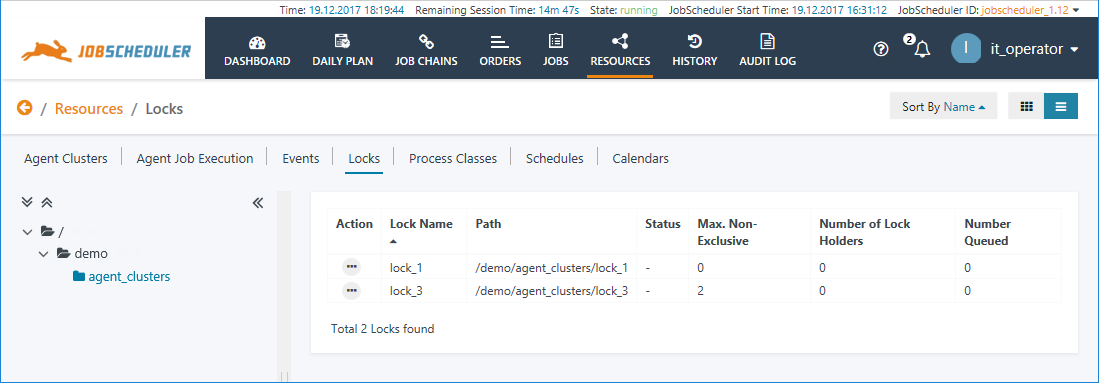Introduction
The Resources View provides information and operational functions for Agent Cluster, Lock , Process Class and Schedule objects.
Agent Clusters
Agent Clusters are not just JobScheduler Universal Agent applications grouped together in a cluster but include the configuration(s) of those Agents on the JobScheduler Masters operating these Agents. This configuration is specified in Process Classes, which are also shown in the JOC Cockpit Resources view (see below).
This means that a cluster of Universal Agent applications, specified in two Process Classes will be listed as two separate Agent Clusters.
To view an Agent Cluster in the JOC Cockpit a user requires Permissions for the viewing the Agent Clusters and for viewing Process Classes.
See the JobScheduler Universal Agent - Agent Cluster article for more information.
Locks
Locks limit the number of jobs that access the same resources, e.g. databases, in parallel.
Locks allow mutual exclusive access, i.e. jobs wait without any consumption of CPU for a lock to be released.
The Locks view is purely informational as can be seen in the screenshot below.
Values shown in the Max. Non-Exclusive column are configured and static - values in the Number of Lock Holders and Number Opened columns are dynamic and reflect the current situation in near real-time.
See the Locks article for more information.
Process Classes
Process classes limit the number of jobs that are running concurrently.
Process classes specify remote JobScheduler Workload instances and Agents on which jobs should be executed.
The Process Classes view is purely informational and includes those Process Classes that do not include a Host parameter for specifying an Agent Cluster.
See the Process Classes article for more information.
Schedules
Schedules are run-time configurations that can be used to define the start times of jobs and orders.
- Schedules can include:
- a run-time configuration and
- a replacement configuration that allows one schedule to be replaced by a different schedule during a certain period.
- Schedules can therefore be used to:
- add reusable run-times to jobs and orders that can be centrally managed.
- implement Maintenance Window Management.
The Schedules view not only provides information about the current Schedules that are configured but allows these Schedules to be:
- substituted with alternative Schedules, for a limited period of time
- modified, also for a limited period of time.
See the Schedules article for more information.



